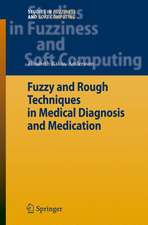Chemists’ Views of Imaging Centers
Editat de Ali M. Emranen Limba Engleză Paperback – 8 mai 2013
| Toate formatele și edițiile | Preț | Express |
|---|---|---|
| Paperback (1) | 1430.90 lei 6-8 săpt. | |
| Springer Us – 8 mai 2013 | 1430.90 lei 6-8 săpt. | |
| Hardback (1) | 1431.09 lei 6-8 săpt. | |
| Springer Us – 31 aug 1995 | 1431.09 lei 6-8 săpt. |
Preț: 1430.90 lei
Preț vechi: 1506.20 lei
-5% Nou
Puncte Express: 2146
Preț estimativ în valută:
273.80€ • 285.87$ • 226.61£
273.80€ • 285.87$ • 226.61£
Carte tipărită la comandă
Livrare economică 05-19 aprilie
Preluare comenzi: 021 569.72.76
Specificații
ISBN-13: 9781475796728
ISBN-10: 1475796722
Pagini: 538
Ilustrații: XIII, 537 p.
Dimensiuni: 178 x 254 x 28 mm
Greutate: 0.94 kg
Ediția:Softcover reprint of the original 1st ed. 1995
Editura: Springer Us
Colecția Springer
Locul publicării:New York, NY, United States
ISBN-10: 1475796722
Pagini: 538
Ilustrații: XIII, 537 p.
Dimensiuni: 178 x 254 x 28 mm
Greutate: 0.94 kg
Ediția:Softcover reprint of the original 1st ed. 1995
Editura: Springer Us
Colecția Springer
Locul publicării:New York, NY, United States
Public țintă
ResearchCuprins
Technical, Administrative and Organizational Issues in Clinical PET.- 1.1. The Role of Chemists in Developing Radiopharmaceutical Applications, Industry and Regulations: Introductory Remarks.- 1.2. The Basics of Positron Emission Tomographic (PET) Imaging.- 1.3. PET: A Biochemical and Physiological Measuring Modality.- 1.4. Layout and Planning of a University Hospital Clinical Cyclotron/PET Facility.- 1.5. Evaluating The UTMCK PET Center: An Organizational and Financial Analysis.- 1.6. The European Concerted Action in PET: Activities in Radiochemistry.- 1.7. Pharmacy Practice and PET.- Regulatory Issues in Clinical PET.- 2.1. Clinical Imaging Centers: The Role of State Radiation Control Programs.- 2.2. PET: The Governmental Reimbursement Perspective.- 2.3. Review of Radiopharmaceutical IND’s and NDA’s.- 2.4. Compliance with Good Manufacturing Practice.- 2.5. The Regulatory Process: The Institute for Clinical PET’s Experience.- 2.6. USP Activities and PET Radiopharmaceuticals.- 2.7. Managing the Obstacles in the Path of Regulatory Approval of PET.- Pet Related Equipments Specifications and Selection.- 3.1. Laboratory and Cyclotron Requirements for PET Research.- 3.2. Truly Frugal PET: Is It Possible?.- 3.3. RFQ’s for PET Radionuclide Production.- 3.4. Strategies in Synthesizing Short-Lived Radiopharmaceuticals for PET.- Quality Assurance/Quality Control and Related Issues.- 4.1. Role of Current Good Manufacturing Practices in Establishment of Quality Assurance for In-House Radiopharmaceuticals.- 4.2. Quality Control for 11C and 18F Radiopharmaceuticals in the Research Environment.- 4.3. Trend Analysis of Quality Control Data.- 4.4. Quality Assurance of Radiolabelled Proteins, Peptides and Anti-Sense Oligonucleotides.- 4.5. Reactor Isotope Quality Assurance.- 4.6.Analytical Instrumentation in the QC of PET Radiopharmaceuticals.- Radiopharmaceuticals for Biomedical Research and Imaging.- 5.1. Development and Production of Radiopharmaceuticals for PET.- 5.2. New PET Tracers for Cerebral Dopamine: Should 6-[18F]-Fluoro-L-Dopa Be Replaced?.- 5.3. Design, Structure-Activity, Labelling and Purity in Development of Receptor Interacting Radiohalogenated Tracers.- 5.4. Halogenated Benzamides as Ligands for Cerebral Dopamine Receptors.- 5.5. Development of Fluorine-18 Radiopharmaceuticals for Dopamine Neuroreceptors.- Applications of Various Nuclides.- 6.1. Radionuclides and Their Applications in Oncology Research.- 6.2. Positron Emitting Radiotracers for in vivo Plant Research.- 6.3. Production and Applications of 123I-Labelled meta-Iodobenzylguanidine (123I-mIBG).- 6.4. Chemistry, Radiochemistry and Applications of Potassium Isotopes.- 6.5. 19F-MR Characterization of Fluorinated Proteins and Relaxation Rate Enhancement with Gd-DTPA for Faster Imaging.- 6.6. Recovery of Bi-213 from an Ac-225 Cow: Application to the Radiolabelling of Antibodies with Bi-213.- Targetry and Precursor Chemistry.- 7.1. Application of Fullerenes in Biomedical Imaging.- 7.2. High Pressure H218O Target for the Production of [18F]-Fluoride Ion.- 7.3. Requirements for Production Targets for Middle-Energy Cyclotrons.- 7.4. Synthesis of Fluorine-18 Labelled Compounds for Brain Imaging.- 7.5. Solid Phase Reagents in Radiosynthesis.- Radiotracer Syntheses.- 8.1. Flourine-18 Labeling of Radiopharmaceuticals for PET Studies: Main Aspects and Problems Encountered in Chemical Synthesis.- 8.2. Distribution and Quantification of 18F-Activity Produced via 20Ne(d,?)18F Reaction in a Gas Target.- 8.3. Twenty Years as a Chemist in the Service of a PET Center.- 8.4. ClinicalBlood Flow Measurements with 15O-H2O and Positron Emission Tomography (PET).- 8.5. Radiofluorinated Enzyme Probes of Dopaminergic Function.- 8.6. Routine Production of [18F]-F2 from 11 MeV Proton-Only Cyclotron and Its Use for 18F-Tracers for Heart and Brain.- Automated Synthesis of Radiotracers.- 9.1. The Hammersmith Philosophy for PET Chemistry Automation.- 9.2. The Use of Microwaves for the Automated Production of Radiopharmaceuticals.- 9.3. Reverse Robotics: Interactive Machines for Controlling People in a Complex Laboratory Environment.- 9.4. Automated Radiochemistry through Transducers: Light from the Far Side.- Chiral Syntheses and Separations.- 10.1. Homochiral Radioligands for PET: Aspects of Asymmetric Synthesis, Analysis and Behavior in Vivo.- 10.2. Fluorinated Tropinyl Esters for Application with PET.- 10.3. Preparation and Examination of Labeled Stereoisomers in Vivo by PET.- 10.4. Radiolabelled Tamoxifen Analogues for Imaging Breast Cancer with SPECT.












